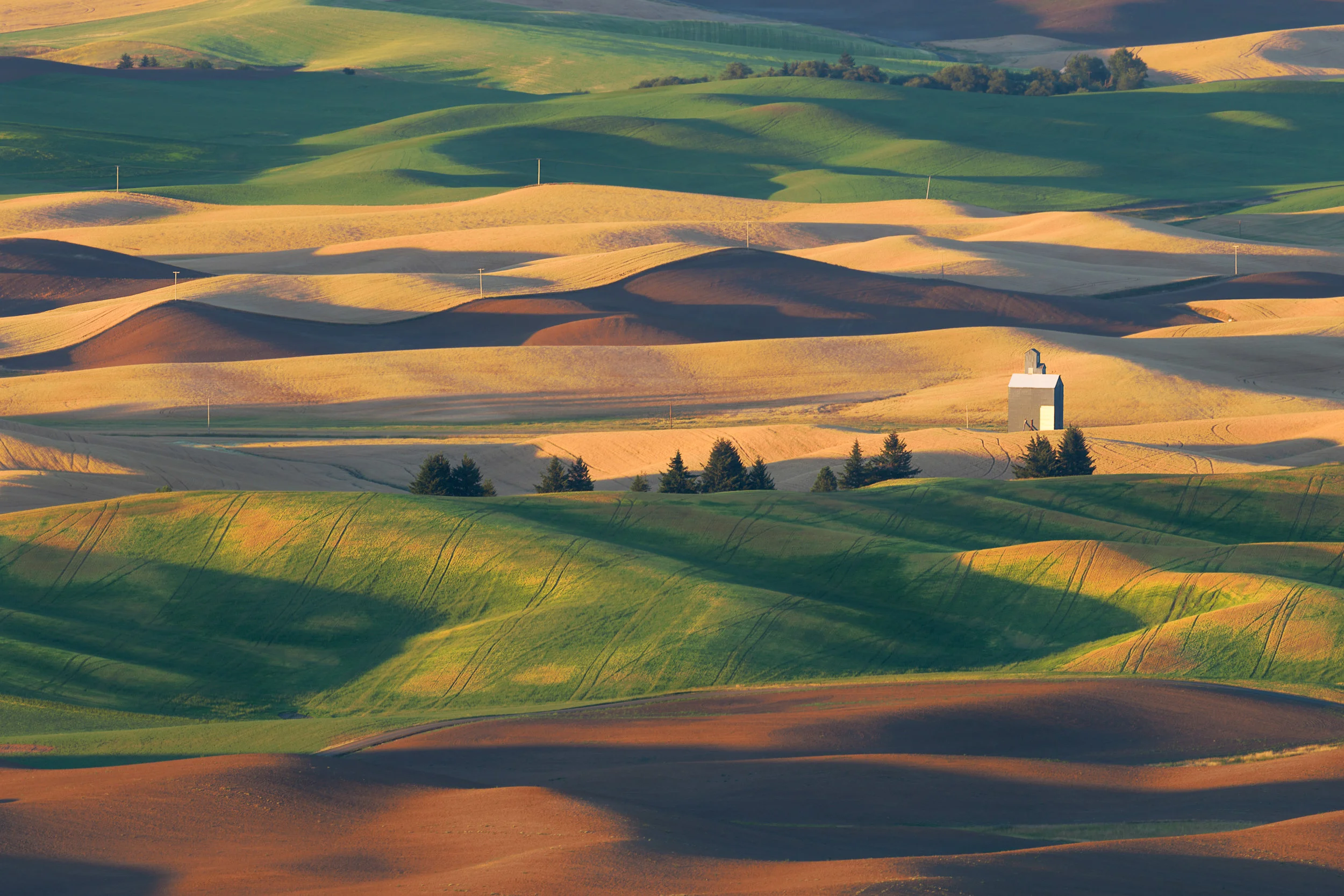Thirty years ago, I read a fascinating book by Paul Hawken titled Growing a Small Business. Hawken had become a bit of a business guru in the late 1980s and was most-widely known as a founder of Smith & Hawken, a popular mail-order garden supply store. I bought an English garden fork from them.
In that book Hawken shared stories of over a dozen small businesses that had become big successes including Patagonia, Ben & Jerry’s Homemade Ice Cream, and United National Bank of Palo Alto, California. United National Bank’s CEO at that time was Carl Schmitt, who later became a founder of the Blue Mountain Land Trust. Hawken hailed Schmitt’s marketing acumen that distinguished his bank from a sea of drab, button-down competitors. Giving sacks of Walla Walla Sweet Onions to his 1,000 biggest depositors with elaborate ceremony was just one of Schmitt’s promotional brainstorms. Hawken’s book became the basis of a 17-episode PBS series of the same name.
Nine books later, Hawken released his 2017 best-seller Drawdown: The Most Comprehensive Plan Ever Proposed to Reverse Global Warming. It’s a long book with five straight-forward messages about climate change: (1) Climate change is real, bad and significantly man-made, (2) It is largely caused by too much carbon in the atmosphere as CO₂, (3) It can be reversed by decreasing the amount of CO₂ in the atmosphere, (4) Airborne CO₂ can be reduced by lowering the amount of carbon that is emitted into the atmosphere, and (5) CO₂ can also be reduced by transferring it from the atmosphere into trees and soil.
The book then lists 80 ways to either reduce CO₂ emissions or increase the transfer of airborne carbon to soil and plant life, a process known as carbon sequestration. Each of the 80 methods is ranked by the number of tons of airborne carbon the practice would eliminate by 2050, the cost of implementing it, and the economic benefits it would create. For more information on the book’s methodology, grab a copy or see drawdown.org.
In reading the various CO₂ reduction practices, I was surprised by the number that fall squarely within the conservation work we do. The majority of our conservation projects are on working farms and ranches. In these projects, we focus on how to preserve and enhance soil fertility, water quality, plant health and the economic productivity of these properties. Thinking about how some of these properties might become significant carbon capture sites and the benefits that could produce, both environmentally and agronomically, was a brand-new experience.
Carbon is neither good nor bad, it’s a basic and vital element of our physical world. The problem arises when too much carbon is in the atmosphere as CO₂. That causes the atmosphere to retain heat and increases mean worldwide temperatures. Alternatively, carbon in soil, trees and other large plants is a good thing. Soil fertility, productivity, and resilience increase dramatically when its carbon content is enhanced. Soil with carbon-based organic matter of 1% is marginally fertile but is enormously productive when raised to 5%.
How can farms, ranches and forests be managed to absorb and retain airborne carbon? Drawdown provides many of those answers.
The 80 carbon-reduction methods Drawdown describes are divided into seven categories: (1) Energy, (2) Food and Agriculture, (3) Women and girls, (4) Buildings and cities, (5) Land Use, (6) Transport, and (7) Materials. There are 16 practices in the Food and Agriculture category and 10 practices in the Land Use. Over 32% of the 80 practices could have some relationship to our conservation work.
Drilling deeper, I identified 16 practices that closely-relate to our farm and ranchland conservation interests. They are listed here in order of carbon-capture impacts as ranked from 1 to 80 by Hawken. CAs are unranked but noted by Hawken as “coming attractions”:
9. Silvopasture
11. Regenerative agriculture
15. Afforestation
16. Conservation agriculture
17. Tree intercropping
19. Managed grazing
23. Farmland restoration
28. Multi-strata agroforestry
51. Perennial biomass
60. Composting
65. Nutrient management
67. Farmland irrigation
72. Biochar
CA. Pasture cropping
CA. Microbial farming
CA. Perennial crops
With permission, Drawdown’s section on Conservation Agriculture is reprinted in its entirety in this newsletter. In future issues, we’ll reprint other sections from the list above.
Carbon sequestration in the soils and trees of farms and ranches has tremendous potential. It’s a subject that is not-fully-understood yet and will be an evolving knowledge base. It’s one to which we will pay close attention.
If you’d like to learn more about agricultural carbon capture, here are some recommended books in addition to Drawdown:
The Soil Will Save Us, Kristin Ohlson
Cows Save the Planet, Judith D. Schwartz
The Grazing Revolution: A Radical Pan to Save the Earth, Allan Savory
Restoration Agriculture, Mark Shephard
Grass, Soil and Hope: A Journey through Carbon Country, Courtney White
Growing a Revolution: Bringing our Soil Back to Life, David R. Montgomery
Conservation Agriculture
Reprint from Drawdown: The Most Comprehensive Plan Ever Proposed to Reverse Global Warming. Edited by Paul Hawken.
Used by hand or drawn by mule, oxen, or tractor, the plow is a standard tool for loosening soil and turning over the top layer before planting crops. Historically viewed as a major advance forward as an agrarian species, plows are absent on farms practicing conservation agriculture, and for good reason. When farmers till their fields to destroy weeds and fold in fertilizer, water in the freshly turned soil evaporates. Soil itself can be blown or washed away and carbon held within it released into the atmosphere. Though intended to prepare a field to be productive, tilling can actually make it nutrient poor and less life giving.
Soil erosion and degradation gave rise to the practice of conservation agriculture in Brazil and Argentina in the 1970s, though in truth most farms were no-till or low-till before the eighteenth century’s industrial innovations. Conservation agriculture adheres to three core principles: minimize soil disturbance, maintain soil cover, and manage crop rotation. The Latin root of conserve means “to keep together.” Conservation agriculture abides by these principles in an effort to keep the soil together as a valuable, living ecosystem that enables food production and can help redress climate change. Conservation agriculture and regenerative agriculture, a separate Drawdown solution, both employ a no-till strategy. Most farmers who practice conservation agriculture plant cover crops. Conservation agriculture differs from regenerative practices in its use of synthetic fertilizers and pesticides.
Annual crops, those that are replanted each year, are grown on 89 percent of the world’s cropland. Conservation agriculture is practiced on 10 percent of those 3 billion acres. It is prevalent in South America, North America, Australia, and New Zealand, among both large-scale operations and small ones. Absent tilling, farmers seed directly into the soil. They leave crop residues after harvesting or grow cover crops in order to protect the soil. Crop rotation — changing what is grown and where — is almost universally practiced when the crops are grains and legumes.
In part, conservation agriculture is already widespread because farmers can adopt it with relative ease and speed and realize a range of benefits. Water retention makes fields more drought resistant or reduces the need for irrigation. Nutrient retention leads to increased fertility and can lower fertilizer inputs. Most farmers who employ conservation agriculture see costs go down, yields go up, and income rise. Critics point out that modern no-till practices, especially in Western countries, rely heavily on herbicide application and genetically modified crops. Others argue that is not true conservation agriculture. In most of Africa, herbicide is not used in no-till farming.
Conservation agriculture sequesters a relatively small amount of carbon dioxide — an average of half a ton per acre. But given the prevalence of annual cropping around the world, those tons could add up and shift this dominant segment of agricultural production from net greenhouse gas emitter to net carbon sink.
Because conservation agriculture makes land more resilient to climate-related events such as long droughts and heavy downpours, it is doubly valuable in a warming world.
Conservation agriculture is a well-proven solution. The core challenge to scaling it is the gap between up-front investments and the gains they ultimately bring. This is especially true for smallholder farmers, who may not be able to wait out returns, and farmers who lease rather than own their land, limiting motivation to invest in the long-term health of its soil. With widespread programs to educate, equip, and financially support farmers, millions more could adopt conservation agriculture, reap its benefits, and enhance farmland as a carbon storehouse.
Impact
Based on historic growth on large farming operations, our analysis projects the total area under conservation agriculture will continue growing from 177 million acres to peak at 1 billion acres by 2035. We assume that as regenerative agriculture becomes more widely used, farms that have already adopted conservation agriculture will convert to these more effective soil fertility practices in response to consumer demand for fewer harmful herbicides. The benefits of that conversion are counted by the regenerative agriculture solution. Nonetheless, conservation agriculture offers significant benefits in the interim, reducing carbon dioxide emissions by 17.4 gigatons based on average carbon sequestration rates of .15 to .25 tons of carbons per acre per year, depending on region. Implementation costs are low at $38 billion with a return of $2.1 trillion.

